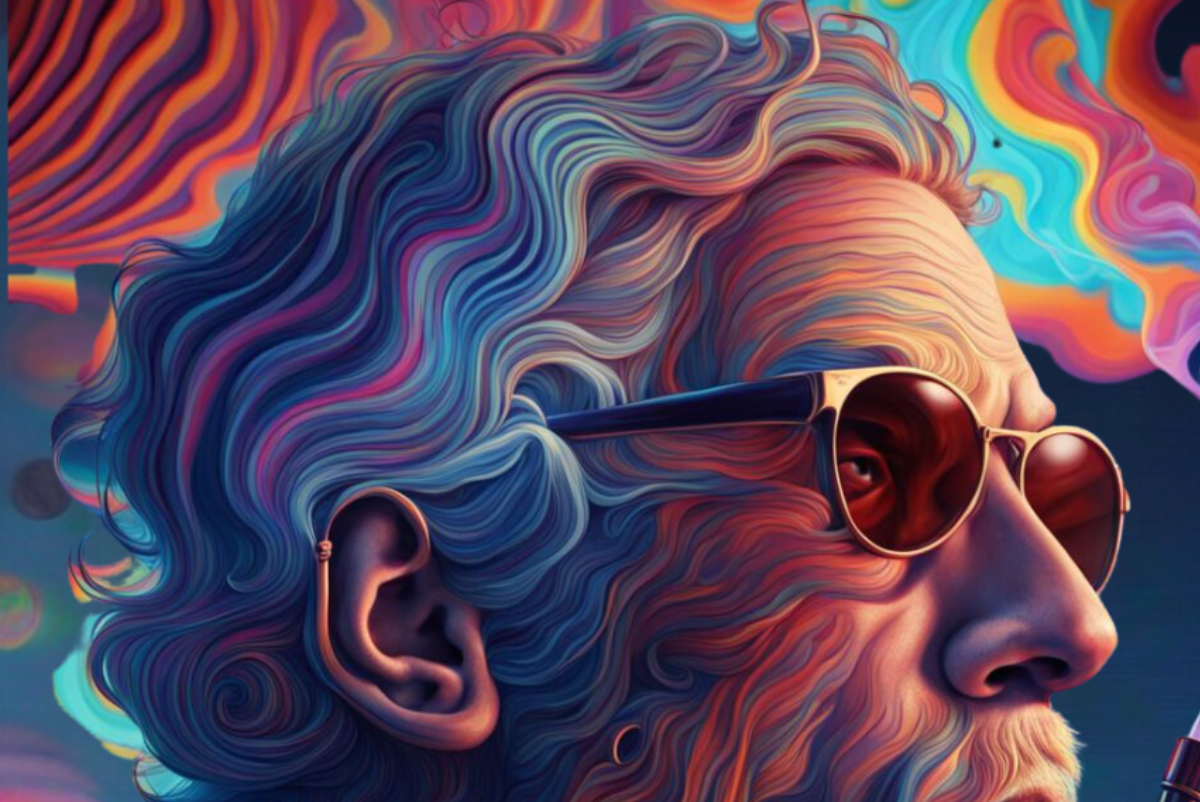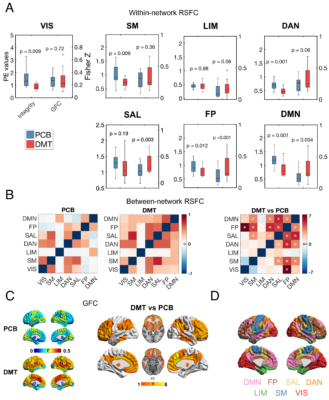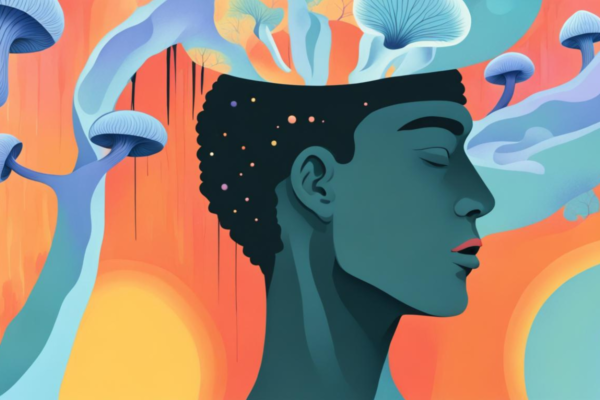
In recent years, folks have had a trip reporting the transformative powers of N,N-dimethyltryptamine (DMT). This mind-bending molecule is the main psychedelic agent in ayahuasca, and its effects on the noggin are fleeting but fierce, the spirit molecule sends your consciousness on a wild ride for mere minutes. No wonder it’s called “the businessman’s trip”.
Imbibing DMT is commonly associated with accessing otherworldly dimensions, which allow users to have conversations about the meaning of the universe with entities of light and machine elves. DMT is reported to potentially have therapeutic benefits for those struggling with debilitating diseases such as depression and stroke recovery while research has also demonstrated that the enigmatic psychedelic can also increase neuron growth by 40%.
Yet, no one has really dug deep into the workings of the brain prior to, during, and following a DMT voyage—until now…
But hold onto your hat, folks, because scientists have finally delved into the mind-bending effects of this molecule and its transformative powers. In the study titled “Human brain effects of DMT assessed via EEG-fMRI“, a group of 20 healthy individuals were studied by researchers at Imperial College in London using advanced brain imaging techniques like fMRI and electroencephalography (EEG) to assess the impact of 20 mg DMT on their brain prior to, during, and after a bolus IV administration. The study also included a separate group which was given a placebo. The study focused on a specific group of brain networks called “canonical resting-state networks” (RSNs), which are active when the brain is not engaged in any particular task or activity.
What they discovered is quite fascinating.
According to their results, the use of DMT resulted in enhanced connectivity throughout the brain, allowing for greater communication between various regions and systems. Additionally, brain activity in areas associated with advanced cognitive functions like imagination was altered.
Worry not, I will attempt to explain the results in actual English so that you don’t have to try to understand the Klingon language used in the study.

DMT, when compared to placebo, was found to significantly decrease the within-network connectivity of all canonical RSNs, except for the salience network, which works as a “dynamic switch” between concentration on self and the inner world, and limbic network, which is responsible for people’s emotions, long-term memory, behavior, motivation, and olfaction.
They also found significant increases in global functional connectivity in the salience network, the frontoparietal network, responsible in regulating “the moment-to-moment decisions involved in the planning and execution of goal-directed behavior“,and default-mode network, which is mainly active when we daydream, think about the past or the future, or think about the perspective of others.
Additionally, the researchers noticed that when the patients were administered DMT, there was a “decrease between-network segregation”, particularly in the frontoparietal, salience, and default-mode networks I mentioned above. In simpler terms, the veil that separated these different brain networks, which are essentially a collection of brain regions communicating with each other, was dropped and this allowed these separate networks to communicate with each other and become more interconnected.
So, why is this important you may ask?
So far, the general belief is that DMT produces its mind-altering effects by activating the 5-HT2A receptor. The current study saw that DMT’s effects were more present in the brain regions who have “the densest expression of serotonin 2A receptors”, and overlapped with regions who are mainly responsible for “evolved cognitive functions such as language and semantic processing.” The results suggest that psychedelics affect a fundamental aspect of brain structure and, as a result, influence the human experience of consciousness.
According to the researchers, the most interesting finding from the results is that psychedelics seem to have a global effect on the brain, indicating a lack of regulation in the “transmodal association cortex pole (TOP)”, which developed later than other parts of the brain in primates and is associated with abstract semantic representations, longer periods of information processing, and is less connected to sensory input like smells and sight. Although there seems to be less communication between low-level sensorimotor modules, which are responsible for basic movements like grasping, vision, hearing and other basic sensory and motor functions, this effect appears to happen after the primary effect on the brain’s primary action of TOP.
What I found most interesting is a paragraph discussing the role of the 5-HT2A receptors in the expansion of the human cortex. According to the scientists, research has shown that the 5-HT2AR receptor signals have a direct impact on the early stages of cortical expansion. Specifically, it increases the proliferation of basal progenitor cells, and this effect varies depending on the receptor and species. The researchers think that it’s possible that the 5-HT2A receptor, which is targeted by psychedelics, played a role in the expansion of the human cortex. The human brain is defined by the abundance of cortical neurons, especially in the top part of the cortex, which has increased by 20 times from macaque to human. The highest concentration of 5-HT2A receptors is located in the top layer of the cortex. Based on this study’s findings, this is also where the strongest and earliest effects of psychedelics occur. Previous research has suggested that the activation of these receptors leads to increased synaptic growth, which plays a role in brain development and learning.
I couldn’t help but wonder: could this be an indication that the “Stoned Ape Theory” might be in fact true and that early humans accelerate evolution by tripping on shrooms? That is one question that I’d love to have an answer to…





